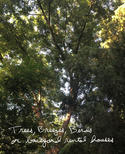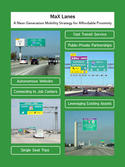After drifting toward decrepitude since the 1970s, many core cities have experienced real, often bracing, turnarounds. Yet concern is growing that the revitalization of parts of these cities has unevenly benefited some residents at the expense of others. The crucial, and often ignored, question remains whether the policies that have helped spark urban revivals have improved conditions for the greatest number of residents. read more »
Dallas
Backyard Rental House Zoning Threatens Trees, Breezes, Birds and Neighborhoods
The Dallas city manager and housing director are proposing a devastating blanket zoning change: allowing ADUs (additional dwelling units), better known as backyard rental houses, in single-family zoned neighborhoods. This change would allow a 44-foot wide by 30-foot tall rental house to be built on the back of a standard 50‑foot wide by 150-foot deep lot. Backyard rental houses would deforest the older neighborhoods, undermine neighborhood stability, accelerate gentrification, reduce diversity of housing, and diminish attainably priced opportunities for homebuyers. read more »
- Login to post comments
The Best Cities For Jobs 2018: Dallas And Austin Lead The Surging South
Among America’s largest metropolitan areas, the economic leaders come in two flavors: Southern-fried and West Coast organic. The first group flourishes across a broad range of industries, fed by strong domestic in-migration and a friendly business climate. The other is driven largely by technology and high-end business services clustered around expensive but highly desirable urban areas. read more »
- Login to post comments
MaX Lanes: A Next Generation Strategy for Affordable Proximity
This is the introduction to a new report written by Tory Gattis of the Center for Opportunity Urbanism. Download the full report here.
The core urban challenge of our time is ‘affordable proximity’: how can ever larger numbers of people live and interact economically with each other while keeping the cost of living – especially housing – affordable? In decentralized, post-WW2 Sunbelt cities built around the car, commuter rail solutions don’t work and an alternative is needed, especially as we see autonomous vehicles on the horizon. read more »
- Login to post comments
Move Over, San Francisco: Dallas Tops Our List Of The Best Cities For Jobs 2017
Dallas is called the Big D for a reason. Bigger, better, best: that’s the Dallas mindset. From the gigantic Cowboys stadium in Arlington to the burgeoning northern suburbs to the posh arts district downtown, Dallasites are reinventing their metropolis almost daily. The proposed urban park along the Trinity River, my Dallas friends remind me, will be 11 times bigger than New York’s Central Park. read more »
- Login to post comments
Taxpayers Need Protection from Dallas-Houston High Speed Rail Bailout? New Report
The proposed privately financed high-speed rail line from Houston to Dallas is projected to have a revenue shortfall of $21.5 billion in its first 40 years of operation. This is the conclusion of a Reason Foundation report by Baruch Feigenbaum, the Foundation’s assistant director of transportation policy (Texas High Speed Rail: Caution Ahead). read more »
- Login to post comments
The Dallas Way of Urban Growth
This essay is part of a new report from the Center for Opportunity Urbanism titled "The Texas Way of Urbanism". Download the entire report here.
Dallas-Fort Worth (DFW) has started the 21st century with a bang. Like the other major metro areas in Texas, the DFW area has grown far faster than most large U.S. cities: 35 percent population growth for the DFW metro area between 2000 and 2014, compared to an average growth rate of 21 percent for America’s top 40 cities. GDP per capita growth in the metro area has also handily outpaced the average of its “Top 40” peers as well, 46 percent versus 39 percent. read more »
- Login to post comments
The Emergence of Texas Urbanism; The Triangle Takes Off
This essay is part of a new report from the Center for Opportunity Urbanism titled "The Texas Way of Urbanism". Download the entire report here.
Throughout the history of the United States, much of the nation’s economic vitality can be traced to specific regions and their mastery of the productive sectors which propelled the country forward. Today we see this most evident in the remarkable emergence of the “Texas Triangle” encompassing Houston, Dallas-Ft. Worth, and Austin-San Antonio. read more »
Urbanism, Texas-Style
Cities, noted René Descartes, should provide “an inventory of the possible,” a transformative experience—and a better life—for those who migrate to them. This was certainly true of seventeenth-century Amsterdam, about which the French philosopher was speaking. And it’s increasingly true of Texas’s fast-growing metropolises—Houston, Dallas–Fort Worth, Austin, and San Antonio. In the last decade, these booming cities have created jobs and attracted new residents—especially young families and immigrants—at rates unmatched by coastal metropolitan areas. read more »
- Login to post comments
Lone Star Quartet
Texas’s spectacular growth is largely a story of its cities—especially of Austin, Dallas–Fort Worth, Houston, and San Antonio. These Big Four metropolitan areas, arranged in a layout known as the “Texas Triangle,” contain two-thirds of the state’s population and an even higher share of its jobs. Nationally, the four metros, which combined make up less than 6 percent of the American population, posted job growth equivalent to 30 percent of the United States’ total since the financial crash in 2007. read more »
- Login to post comments






















